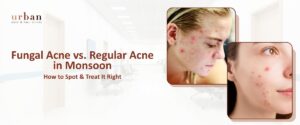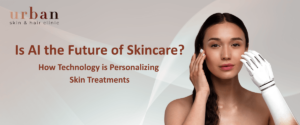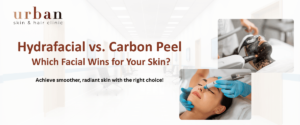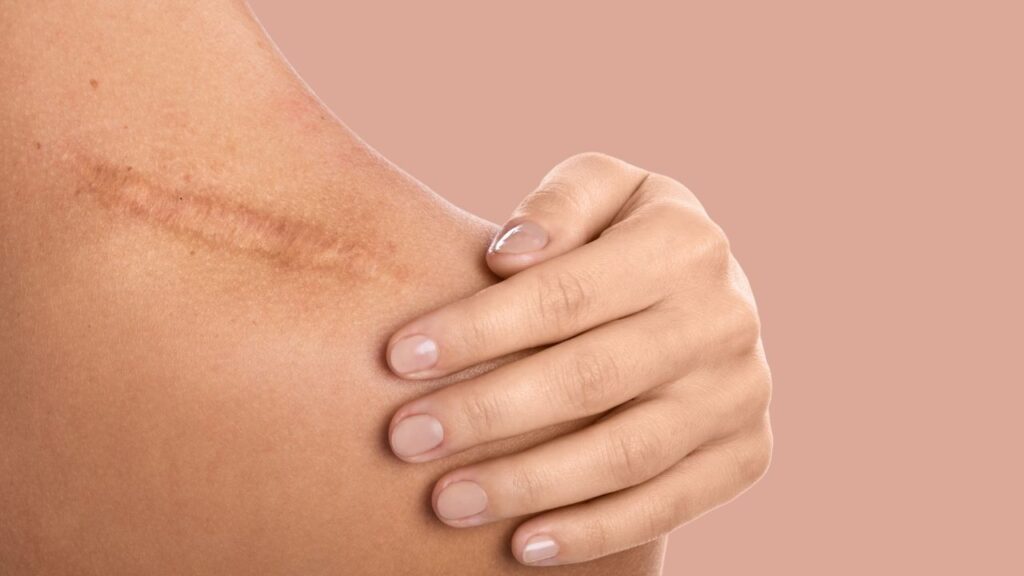How to Reduce Acne Redness?

Table of Contents
What is Acne Redness?
Inflammation is the root cause of acne redness. The immune system’s reaction to the pimple causes swelling and redness on the skin. As blood flow to the affected region increases, the body sends white blood cells to combat the infection. Therefore, the area becomes red and inflamed, leaving an unattractive red stain.
Why Does Acne Cause Redness?
Swelling and redness are symptoms of inflammatory acne, which occurs when oil, dead skin, and the Cutibacterium acnes (formerly known as Propionibacterium acnes) bacteria block pores.
Follicle-clogging debris and bacteria lead to irritation and red lumps on the skin, known as pimples.
In addition to acne pimples, you may also see the following red marks:
- Papules: Lumps on the skin that are pus-filled and red
Pustules: Same as papules, but much bigger - Nodules: Pimples under the skin that are typically red but may sometimes be flesh-coloured and contain pus.
- Cysts: Huge, painful, pus-filled
inflammations under the skin’s surface that are red and filled with pus.
Call Our Specialist
Treatments to getting Rid of Redness from Acne
We need to address the underlying cause of the inflammation to reduce acne redness. It reduces the severity of the redness and the overall appearance of the acne lesions.
Moreover, a wide range of treatments is available to combat acne by unclogging pores and controlling oil production while also decreasing inflammation and eliminating acne-causing germs.
- Over-the-Counter Topicals
To reduce acne redness and speed up the healing process, you may use over-the-counter (OTC) topical acne medicines. Benzoyl peroxide and salicylic acid are the most effective active components in these topical treatments since they have been used for decades to treat mild to moderate conditions.
- Benzoyl peroxide
It is possible to use benzoyl peroxide as an all-over treatment or a spot therapy for acne. It can destroy acne-causing bacteria, remove excess oil and debris from pores, and decrease swelling and redness.
Peroxide Benzoyl found in gels, lotions, and cleansers is a common ingredient. It comes in three different concentrations: 2.5%, 5%, and 10%. Avoid causing further irritation to your skin by reading the product label and following the directions. It’s best to start with a patch test to see if you have any allergies or sensitivities.
- Salicylic Acid
Acne-fighting salicylic acid is a valuable staple since it relieves the inflammation and discomfort caused by acne. It aids in the exfoliation of the skin’s top layer of clogged pores and decreases acne-related irritation and redness. It also helps to reduce oil production, which is a major cause of acne outbreaks. Pore reduction will help make skin look smoother.
Concentrations ranging from 0.05–5 percent are available in cleansers, toners, creams, and lotions for your skin type. As with benzoyl peroxide, it’s best to do a skin test to see whether anybody in the family is allergic. The use of salicylic acid in conjunction with retinoids like tretinoin or adapalene may irritate the skin.
- Prescription treatments
It’s time to see your dermatologist or doctor about prescription-strength topical and oral remedies if OTC therapies aren’t resolving your acne.
- OTC treatments often include the same active chemicals as those prescribed by a dermatologist, but at greater doses. To make a complete acne skin care plan, they’ll look at other treatment options as well.
- In addition to retinoids, there are other types of acne-fighting medications that clean blocked pores as they work. Treatment for acne using tretinoin and other topical medicines like benzoyl peroxide often includes retinoids, such as topical tretinoin, for improved penetration of acne treatments.
- Other prescription medicines used to treat severe acne include oral antibiotics (typically from the tetracycline family) and oral isotretinoin. Both aim to reduce acne-related redness and breakouts by eliminating acne-causing bacteria on the skin’s surface and decreasing inflammation.
At what age is acne the worst?
Even though acne is often associated with adolescence, adults account for approximately 20% of all occurrences. Between the ages of 10 and 13, acne is most likely to appear and is more severe in those with oily skin. For most people, adolescence is marked by acne that lasts five to ten years until clearing up in their early 20s.
Does acne redness go away?
Any red or brown marks left behind by an infected zit will ultimately go away. It may, however, take as long as a year. When it comes to acne marks, speak to your doctor. They may be able to provide guidance.
Why is my acne so red?
Along with certain cases, acne flare-ups leave red, pink, or purple scars in their path. Post-inflammatory erythema (PIE) is the medical term for these persistent red patches . It is more probable that PIE will affect individuals with fair complexions such as skin types I, II, and III on the Fitzpatrick skin phototype scale.
Conclusion
Inflammation is the cause of acne-related redness. Acne may be healed and prevented from recurring if treated early and with the appropriate medicine.
There are many over-the-counter formulations to select from; if your acne does not improve after trying one of them, contact us to discuss your problems with our best physicians who will prescribe a more potent therapy.
If you are suffering from acne problem then visit best acne treatment centre in Pune and best acne treatment clinic in Mumbai. Book your appointment today and get rid from acne with our acne treatment in India.












